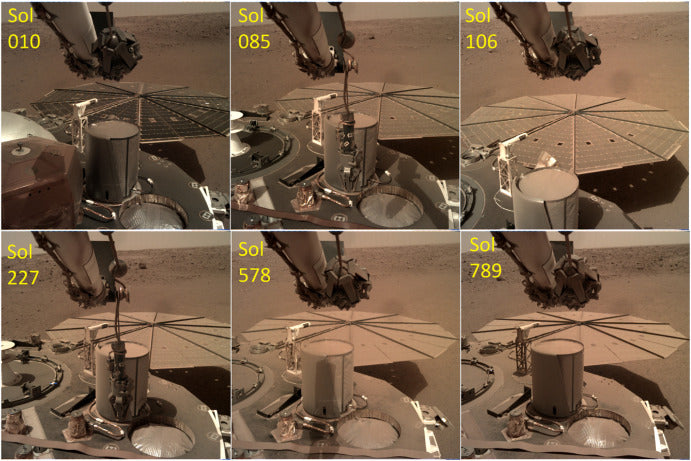
Beloved US$813 Million Mars Robot Is Terminal. Has Weeks to Live.
Share
NASA's marsquake hunter is nearing its end.
NASA's InSight lander is being choked off by so much dust that the mission, which is long past its expiration date, is expected to cease operations very soon.
"The spacecraft’s power generation continues to decline as windblown dust on its solar panels thickens, so the team has taken steps to continue as long as possible with what power remains," NASA officials wrote in an update on Wednesday, the 2nd of November. "The end is expected to come in the next few weeks."

The InSight mission touched down on Mars in November 2018, helping scientists map its interior in unprecedented detail. With more than 1,300 illuminating marsquakes detected, the lander has achieved its goal.
"Observing how the seismic waves from those quakes change as they travel through the planet offers an invaluable glimpse into Mars' interior but also provides a better understanding of how all rocky worlds, including Earth and its moon, form," NASA officials wrote in the update. Measurements from a burrowing heat probe were supposed to supplement InSight's marsquake data. However, the probe couldn't reach deep enough underground to do its work.
InSight's primary mission lifetime of two Earth years has been far exceeded. Due to the dust that regularly falls on its solar arrays, the clock is ticking. To keep InSight's seismometer suite running, the mission team had to turn off all of InSight's other instruments this summer due to dust buildup.
"We were down to less than 20% of the original generating capacity," InSight principal investigator Bruce Banerdt, of NASA's Jet Propulsion Laboratory in Southern California, said in Tuesday's update. "That means we can’t afford to run the instruments around the clock."
After a recent dust storm, the already dust-covered InSight received even more grains. Seismometers on the lander were turned off to save power during the storm. In a few weeks, the power will likely run out.
As the InSight team prepares to end the mission, about 30 people are archiving data collected for future research and packing up a twin engineering model called "ForeSight," which was used to partly troubleshoot the burrowing heat probe problem . Those efforts were unsuccessful.
"We'll be packing it up with loving care," Banerdt said of ForeSight, which will be placed in storage, potentially for future missions to use. "It's been a great tool, a great companion for us this whole mission."
As a result of weight and power concerns, InSight launched without solar panel cleaning measures. There are times when Mars missions are lucky enough to benefit from a gust of wind blowing away dust, but NASA officials say it is unlikely enough wind will blow to significantly extend InSight's life.

Scientists will likely continue analyzing InSight's data for years to come. Since a planet's full history is encoded in its interior layers, the findings will help researchers revisit their models of how rocky planets form, and ultimately, inform the study of worlds that could host life beyond our solar system.
"This mission is really near and dear to my heart," Banerdt said, adding, "I've been trying to get a seismometer on Mars for most of my career."
InSight's death will be more gradual than Opportunity's. It begins in just a few weeks, when mission managers plan to move its robotic arm into "retirement pose," Zamora Garcia said. Then they'll shut off the science instruments one by one, finally saying goodbye to the seismometer in late summer.
"Before InSight, the interior of Mars was kind of just a big question mark," Banerdt said, adding, "Now we can actually draw a quantitatively precise picture of the inside of Mars."
You’ve come this far…
Why not venture a little further into A.S.S. - our exclusive Australian Space Society.
And keep thrusting Australia into the deep unknown…
#Space_Aus





1 comment
What an amazing achievement for Insight and the people who created it. I am sure the data will provide great information. Great work and hopefully more achievements on the future.
RIP and thankyou Insight